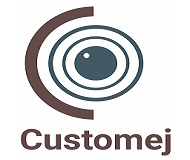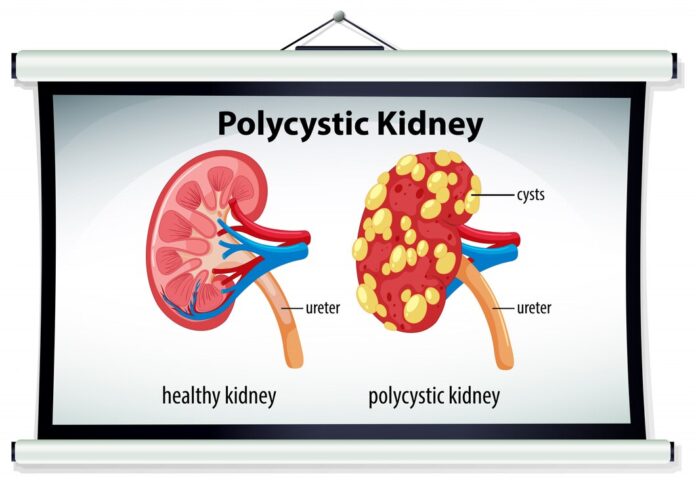It is a chronic pathology in which the blood vessels have high tension that may damage them. It is the force exerted by the blood on the walls of the vessels (arteries) when it is pumped by the heart.
Hypertension is a treatable pathology, but its lack of control can trigger serious complications, such as myocardial infarction, heart failure or stroke.
The first cause of hypertension is suffered by the arteries, which harden as they continuously support high blood pressure and become thicker. As a result, the passage of blood through them can be difficult.
Prevalence
Around 40% of the Spanish population is hypertensive, according to data from recent studies. It is estimated that more than 37% of those people are undiagnosed. However, the number of diagnosed patients with uncontrolled hypertension is equally high: “The percentage of hypertensive patients on whom total control of blood pressure figures is not achieved is around 40%.
Causes
Although the specific causes of high blood pressure are not yet known, it has been related to a series of factors that are usually present in most people who suffer from it. For example, it is convenient to separate those related to genetic inheritance, sex, age and race, and therefore little modifiable, from those others that could be changed by changing the habits and the environment in which people live, such as obesity, sensitivity to sodium, excessive alcohol consumption, the use of certain drugs and a very sedentary lifestyle.
non-modifiable causes
- Genetic factors:
The predisposition to develop arterial hypertension is linked to a first-degree relative having this pathology. Although the exact mechanism is unknown, scientific evidence has shown that when a person has one (or both) hypertensive parents, the chances of developing hypertension are double those of other people with both parents without hypertension problems.
- Sex:
Men develop high blood pressure than women until they reach the age of menopause. From this stage, the frequency in both sexes is equal. This is due to the female hormones that protect women during their childbearing years, reducing their risk of suffering from cardiovascular diseases.
Age and race:
Age is another factor influencing blood pressure figures so that both systolic or maximum blood pressure and diastolic or minimum blood pressure increase with age.
Regarding race, black individuals are twice as likely to develop hypertension as white individuals and have a worse prognosis.
modifiable causes
- Overweight and obesity:
Overweight individuals have a higher blood pressure risk than normal. As weight increases, blood pressure rises, which is much more evident in those under 40 years of age and women. In addition, the frequency of arterial hypertension among obese, regardless of age, is two to three times higher than that of normal-weight people.
Obesity is another series of alterations partly responsible for increased blood pressure. Weight reduction makes these alterations disappear.
Other causes
Vascular:
About 2.5 and 6 per cent of kidney-related problems can influence the onset of high blood pressure. The prominent vascular pathologies that influence are:
- Polycystic kidney disease.
- Chronic kidney disease.
- Renin-producing tumours.
- Liddle’s syndrome.
- Renal artery stenosis.
Endocrinological:
Endocrine causes represent between 1 and 2 per cent. These include exogenous and endogenous hormonal imbalances. Exogenous causes include the administration of corticosteroids.
Approximately 5 per cent of women taking oral contraceptives may develop hypertension. Risk factors for hypertension associated with oral contraceptive use include mild kidney disease and obesity.
Nonsteroidal anti-inflammatory drugs (NSAIDs) can have adverse effects on blood pressure. These drugs block both cyclooxygenase-1 (COX-1) and COX-2 enzymes. Inhibition of COX-2 can inhibit its natriuretic development, increasing sodium retention. Nonsteroidal anti-inflammatory medications also inhibit the vasodilatory effects of prostaglandins and the production of vasoconstrictor factors, i.e., endothelin-1. These effects may contribute to the induction of hypertension in a patient with controlled or normotensive hypertension.
Endogenous hormonal causes include:
- Primary hyperaldosteronism.
- Cushing’s syndrome.
- Pheochromocytoma.
- Congenital adrenal hyperplasia.
Neurogenic causes include:
- Brain tumours.
- Bulbar poliomyelitis.
- intracranial hypertension.
In addition, some drugs and toxins can cause the appearance of hypertension:
- Alcohol.
- Cocaine.
- Cyclosporine, tacrolimus.
- Nonsteroidal anti-inflammatory drugs.
- Erythropoietin.
- Adrenergic medications.
- Decongestants containing ephedrine.
- Herbal remedies include liquorice.
- Nicotine.
Finally, some diseases are related to hypertension, such as hyperthyroidism and hypothyroidism, hypercalcemia, hyperparathyroidism, acromegaly, obstructive sleep apnea, and pregnancy-induced hypertension.
Symptoms
According to research, “the greatest limitation when it comes to detecting hypertension is that most cases occur without any symptoms. and, therefore, the disease goes unnoticed, with the risk that this entails”.
There are non-specific symptoms, such as headaches, help to detect it because they alert the patient who decides to go to the doctor or the pharmacy to have their blood pressure taken. However, he points out that these symptoms cannot be attributed to hypertension because they coincide in time as a response to pain.
In the case of hypertensive patients who have been undiagnosed for a long time, the president points out that they may suffer a complication at a given moment, such as angina pectoris, a symptom derived from that complication.
Prevention
Having a healthy lifestyle and, above all, avoiding overweight and obesity are the main factors in preventing the onset of hypertension.
Regular exercising and Eating a healthy diet can help the general population avoid suffering from this pathology. Quitting smoking also prevents this. Tobacco increase high blood pressure risk.
Genetic factors and family history is an additional warning call for the patient to take care of their lifestyle and monitor their blood pressure regularly.
Get high-DA guest post websites that boost rankings! Secure niche placements with fast approvals for better SEO.
Types
Blood pressure has two components:
Systolic pressure: It is the highest number that represents the tension generated by the heart when it pumps blood to the rest of the body.
Diastolic pressure is the lowest number, referring to the pressure in the blood vessels between heartbeats.
Blood pressure is measured in millimetres of mercury (mmHg).
High blood pressure is classified as:
- Normal: range from 120/80 to 129/84 mmHg.
- High Normal: range from 130/80 to 139/89 mmHg.
- Stage 1 hypertension: ranges from 140/90 to 159/99 mmHg.
- Stage 2 hypertension: range of this stage is 160/100 to 179/109 mmHg.
Stage 3 hypertension: it is greater than 179/109 mmHg.




